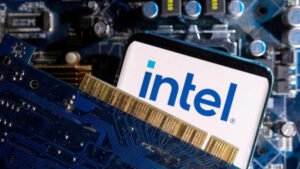Intel has officially announced details of its upcoming Lunar Lake chips, which are slated to be used in Copilot+ AI computers this fall.
These new chips offer up to 48 TOPS (terabytes of operations per second) of AI performance, supported by an updated Neural Processing Unit (NPU).
This is a significant leap from Intel’s previous Meteor Lake chips, which offered 10 TOPS NPUs, and puts it in Intel’s ongoing AI performance race with rivals such as AMD and Qualcomm. Intel’s Lunar Lake chips announced at Computex promise significant advances.
In addition to impressive AI performance, they have a new Xe2 GPU that offers 80 percent faster gameplay compared to the previous generation. In addition, the on-chip AI accelerator adds extra performance to the 67 TOPS.

Despite these improvements, Intel faces competition from AMD’s Ryzen AI 300 chips, which will be released in July with 50 TOPS NPUs, and Qualcomm’s Snapdragon X Elite and X Plus chips.
These competitors highlight the aggressive push in the AI computing market. In a significant development, Lunar Lake chips include Apple Silicon-like internal memory. 16 GB or 32 GB of RAM is an option, but according to Apple’s design, they cannot be upgraded.
This integration enables lower latency and system power consumption by 40 percent, although it limits users’ need for more RAM until Intel’s next chip family, Arrow Lake, is released.
Lunar Lake also includes eight cores divided between performance and efficiency (P-cores and E-cores). The chip includes an “advanced low-power island” that allows efficient management of background tasks, contributing to a claimed 60 percent improvement in battery life compared to Meteor Lake.
Despite these improvements, Intel’s competition is AMD’s Ryzen AI 300 chips, which will be released in July with 50 TOPS NPUs, and Qualcomm’s Snapdragon X Elite and X Plus chips.
These competitors highlight the aggressive push in the AI computing market. Qualcomm chips, known for their energy efficiency, are said to last more than 20 hours in Copilot+ Surface devices, although independent testing is still ongoing. Luna Lake’s connectivity includes Wi-Fi 7, Bluetooth 5.4, PCIe Gen5, and Thunderbolt 4.
At a pre-PC press conference, Intel shared benchmark results showing the superiority of Lunar Lake over Meteor Lake in tasks such as stable propagation.
Luna Lake completed 20 repetitions in 5.8 seconds compared to Meteor Lake’s 20.9 seconds, although it used slightly more power.
Specific chip designs and detailed specifications for Luna Lake have yet to be revealed, but Intel’s latest offerings represent significant advances in AI and computing performance, setting high expectations for their release this fall.











